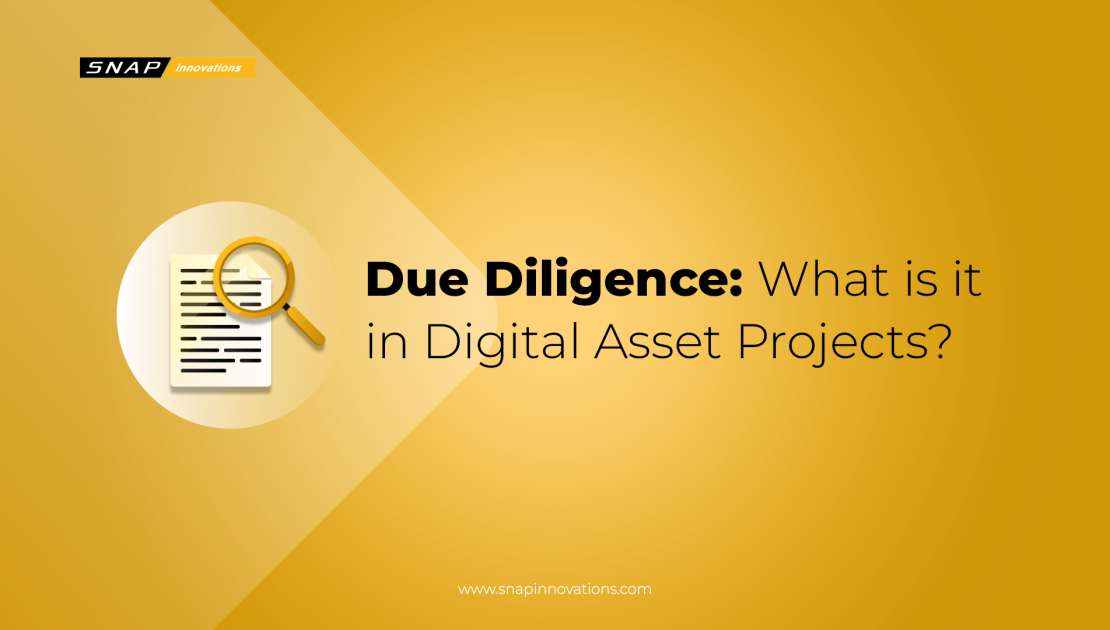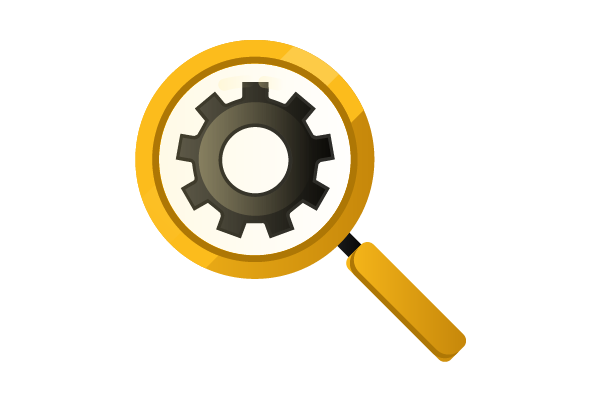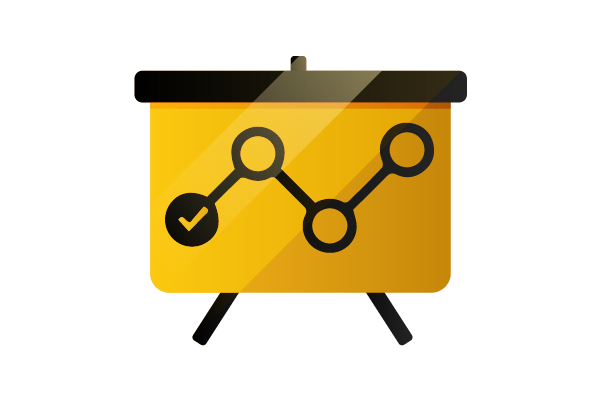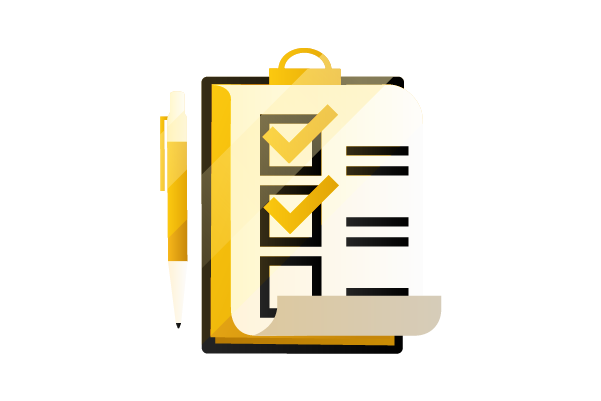Due Diligence: Protecting Your Investments

Welcome to the thrilling world of digital asset projects! In this fast-paced digital era, opportunities for investment in digital assets are not just abundant but also incredibly diverse. Whether you’re considering cryptocurrencies, blockchain startups, or tokenized assets, the digital realm offers a multitude of possibilities. However, as you navigate this exciting landscape, it’s paramount to understand the critical role of due diligence.
Due diligence is not merely a buzzword; it’s the cornerstone of responsible investing in the digital asset sphere. In this comprehensive guide, we’ll embark on a journey to unravel the complexities of due diligence specifically tailored to digital asset projects. By the end of this exploration, you’ll be well-equipped to make astute decisions and effectively safeguard your investments against potential pitfalls.
So, let’s dive in and discover how due diligence can be your compass, guiding you through the labyrinth of digital asset projects, helping you unearth opportunities, and fortifying your defenses against unforeseen risks.
What is Due Diligence?
 Due diligence is a term often thrown around in the world of finance and investment, but what exactly does it mean in the context of digital asset projects? In simple terms, due diligence refers to the process of conducting a thorough investigation and analysis before committing resources, time, or capital to a project. It’s like peeling back the layers of an onion to reveal what lies beneath. In the realm of digital assets, due diligence involves a multifaceted approach that takes into account various aspects of the project.
Due diligence is a term often thrown around in the world of finance and investment, but what exactly does it mean in the context of digital asset projects? In simple terms, due diligence refers to the process of conducting a thorough investigation and analysis before committing resources, time, or capital to a project. It’s like peeling back the layers of an onion to reveal what lies beneath. In the realm of digital assets, due diligence involves a multifaceted approach that takes into account various aspects of the project.
Also Read: Blockchain Consulting: Things that You Should Know
One of the primary objectives of due diligence is to assess the project’s viability and potential for success. This includes scrutinizing the project’s goals, team, technology, and market conditions. Additionally, due diligence aims to identify any potential risks or red flags that might compromise your investment. Think of it as your safety net in the world of digital assets.
The Importance of Due Diligence
The importance of due diligence cannot be overstated, especially in the rapidly evolving and sometimes tumultuous world of digital asset projects. Let’s delve deeper into why due diligence is your invaluable tool in navigating this landscape.
1. Risk Mitigation and Fraud Prevention
Due diligence is your first line of defense against potential risks and fraudulent schemes. In the digital asset space, where anonymity often prevails, scammers and dishonest projects can easily lure unsuspecting investors. By conducting thorough due diligence, you can uncover red flags, such as fake teams, plagiarized whitepapers, or unverified claims, helping you steer clear of scams and unscrupulous actors.
2. Understanding Project Viability
Every digital asset project starts with a vision, outlined in a whitepaper. Due diligence involves scrutinizing this document meticulously. You’ll assess the project’s goals, technology, and roadmap to gauge its feasibility. Are the project’s objectives realistic? Does the technology have a practical application, or is it merely a solution in search of a problem? By answering these questions, due diligence empowers you to differentiate between projects with genuine potential and those lacking substance.
3. Team Assessment
A project is only as strong as the team behind it. Due diligence involves a deep dive into the backgrounds and experiences of the project’s founders and team members. Are they experts in their respective fields? Do they have a track record of successfully executing similar projects? By evaluating the team’s credentials, you can gain insights into the project’s leadership and its ability to navigate challenges.
4. Technical Evaluation
For blockchain-based projects, the underlying technology is the backbone of their success. Due diligence requires a comprehensive assessment of the technology stack. You’ll examine the blockchain protocol, consensus mechanism, and scalability features. Additionally, scrutinize the project’s codebase for security vulnerabilities. Understanding the technical aspects of a project is essential for assessing its long-term sustainability.
5. Market Analysis
Market conditions have a substantial impact on the success of digital asset projects. Due diligence extends to researching the competitive landscape. Are there similar projects already in existence? If so, what sets this project apart? An in-depth market analysis also involves considering the project’s target audience, adoption potential, and market trends. Furthermore, understanding the regulatory environment in which the project operates is crucial, as it can affect its growth and compliance.
6. Financial Viability
Financial stability is a key aspect of due diligence. You’ll examine the project’s funding sources and allocation strategy. Does the project have a sustainable financial plan beyond its initial coin offering (ICO) or token sale? Over-reliance on token sales for funding can indicate financial instability, which may impact the project’s ability to deliver on its promises.
7. Security Measures
Given the prevalence of hacking and security breaches in the digital asset space, assessing the project’s security measures is paramount. Look for transparency regarding how the project plans to secure its assets and user data. Robust security protocols are crucial to safeguard against potential threats.
8. Roadmap and Vision Alignment
A project’s roadmap outlines its future milestones and objectives. Due diligence includes evaluating whether the roadmap aligns with the project’s vision. Assess whether the project has a clear strategy for achieving its goals and whether it has a realistic timeline for implementation.
Due diligence in digital asset projects is akin to a comprehensive investigation. It’s a meticulous process that involves assessing multiple facets of a project to ensure that your investment aligns with your goals and risk tolerance. Remember, due diligence is not a one-time task but an ongoing commitment to stay informed and adapt as the digital asset landscape evolves. By conducting thorough due diligence, you can confidently navigate the complexities of the digital asset space and make well-informed investment decisions.
Where to Begin Your Due Diligence Journey?
 Now that you understand the significance of due diligence, you might be wondering where to start. The process can be overwhelming, but breaking it down into manageable steps can simplify your journey.
Now that you understand the significance of due diligence, you might be wondering where to start. The process can be overwhelming, but breaking it down into manageable steps can simplify your journey.
Begin by thoroughly researching the project’s whitepaper. A whitepaper is a foundational document that outlines the project’s goals, technology, and roadmap. Pay close attention to the team behind the project. Investigate their credentials, experience, and track record in the industry. Additionally, look for transparency regarding project funding and allocation.
Next, analyze the project’s technology. If it’s blockchain-based, delve into the underlying blockchain protocol and its security features. Assess the scalability and usability of the technology, as these factors can significantly impact the project’s long-term success.
Evaluating Market Conditions
In the digital asset landscape, where innovation and competition are fierce, assessing market conditions is a fundamental aspect of due diligence. This step involves scrutinizing the environment in which the digital asset project operates, as it directly impacts its potential for success and sustainability.
Begin your market analysis by carefully examining the competitive landscape. Determine whether there are similar projects already in existence that share similarities with the one you’re considering. If there are, it’s essential to understand what sets your chosen project apart from its competitors. Here are some critical questions to ask:
- Unique Value Proposition: What is the project’s unique selling proposition (USP)? In other words, what does it offer that others do not? Assess whether the project brings innovative features, improved technology, or a different approach to solving existing problems.
- Market Positioning: Where does the project stand in relation to its competitors? Is it a first-mover in the market, or is it attempting to capture a niche audience within a larger industry? Understanding the project’s positioning can provide insights into its potential market share.
- Competitor Analysis: Conduct a comprehensive analysis of the project’s competitors. Evaluate their strengths and weaknesses, user bases, and track records. This knowledge can help you gauge the competitive landscape more effectively.
Regulation plays a pivotal role in the digital asset space, given its global nature and the evolving regulatory landscape. Understanding how regulations may affect the project you’re interested in is vital for informed decision-making.
- Legal Compliance: Determine whether the project complies with local and international laws and regulations. Depending on its nature and jurisdiction, a digital asset project may need to adhere to anti-money laundering (AML) and know-your-customer (KYC) requirements, among others.
- Regulatory Risk: Assess the potential regulatory risks associated with the project. Different countries have varying levels of regulatory acceptance for digital assets, and sudden changes in regulations can significantly impact the project’s operations. Stay informed about the regulatory climate in relevant jurisdictions.
- Adaptability: Investigate the project’s ability to adapt to changing regulatory environments. Projects with a proactive approach to compliance are more likely to thrive in the face of evolving regulations.
Evaluating market conditions is a critical aspect of due diligence in digital asset projects. By comprehensively assessing the competitive landscape and understanding the regulatory environment, you can gain a clearer perspective on the project’s potential for success and its resilience in the ever-changing digital asset ecosystem. This knowledge empowers you to make more informed investment decisions and manage risks effectively.
Risk Assessment and Mitigation
 Risk assessment and mitigation are the cornerstones of prudent decision-making. As an investor, your primary objective is to not just understand the risks associated with a project but also to develop effective strategies for mitigating them.
Risk assessment and mitigation are the cornerstones of prudent decision-making. As an investor, your primary objective is to not just understand the risks associated with a project but also to develop effective strategies for mitigating them.
1. Financial Stability Assessment
Begin your risk assessment by scrutinizing the financial stability of the digital asset project. A thorough examination of the project’s funding sources and allocation is critical. Look for transparency in how the project is financed. Is it overly reliant on token sales as its primary source of income? While token sales can be a legitimate fundraising method, a project that solely depends on them may be at risk of financial instability.
Sustainable financial planning is a key indicator of a project’s long-term viability. Does the project have a clear and realistic financial roadmap? Are funds allocated for critical development and operational expenses? These questions should guide your evaluation. Furthermore, analyze the project’s token economics to ensure that it aligns with the project’s goals and incentives.
2. Security Measures Evaluation
The digital asset space is rife with security threats, ranging from hacking attempts to data breaches. To safeguard your investments and protect your personal information, you must assess the project’s security measures.
Begin by examining the project’s cybersecurity practices. Does it employ robust encryption and authentication protocols? Is user data stored securely? A comprehensive privacy policy and adherence to data protection regulations (such as GDPR) are indicators of a project’s commitment to safeguarding user information.
For blockchain-based projects, scrutinize the security of the underlying technology. Ensure that the blockchain protocol is well-established and has a track record of security. Assess the project’s smart contract security, as vulnerabilities in smart contracts can lead to substantial losses. Look for third-party audits of the project’s code, which can provide an additional layer of assurance.
The risk assessment and mitigation phase of due diligence are about proactively identifying vulnerabilities and devising strategies to minimize the impact of potential risks. Remember that while no investment is entirely risk-free, a well-informed and cautious approach can significantly enhance your chances of success in the world of digital asset projects.
Making Your Informed Decision
After completing a thorough due diligence process, you’ll be armed with a wealth of information about the digital asset project. Now comes the critical moment—making your decision.
First and foremost, remember that due diligence is an ongoing process. Even after you’ve invested, continue to monitor the project’s progress and adapt your strategy as needed. Stay informed about any developments, partnerships, or regulatory changes that may impact your investment.
Read Next: Defi Staking Platform Development: Key Steps and Considerations
When making your decision, consider your risk tolerance and investment goals. Diversifying your portfolio is often a wise strategy to spread risk. Additionally, consider seeking advice from financial experts or joining online communities of like-minded investors to gain valuable insights and perspectives.
Conclusion
In the world of digital asset projects, due diligence is your compass, guiding you through the maze of opportunities and risks. By thoroughly researching, evaluating, and mitigating risks, you can make informed decisions that align with your investment goals. Remember that due diligence is not a one-time task but an ongoing process that requires vigilance and adaptability. With the right approach, you can navigate the digital asset landscape with confidence and success. Happy investing!
Disclaimer: The information provided by Snap Innovations in this article is intended for general informational purposes and does not reflect the company’s opinion. It is not intended as investment advice or recommendations. Readers are strongly advised to conduct their own thorough research and consult with a qualified financial advisor before making any financial decisions.
